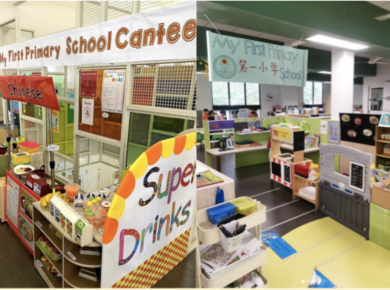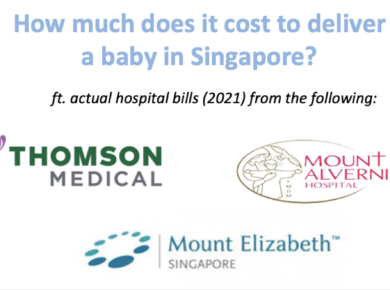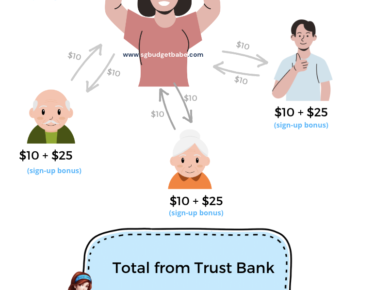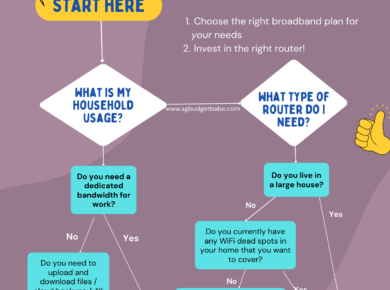As a second-time mother, I’ve been asked by several readers on what advice I would give to first-time parents who are preparing for the arrival of their newborn. While I’ve written dozens of articles on the topics, this one seeks to serve as a comprehensive preparation guide.
So here’s what you need to prepare at every stage of your pregnancy:

First Trimester
1. Choose your OBGYN.
Expecting mothers can opt for either the private or public route.
While it is cheaper to go through the subsidized, public hospital route (e.g. KKH or NUH), the downside is that you’ll have to deal with long wait times and won’t be able to get your own dedicated gynaecologist to follow through.
Which is why I personally prefer (and so do many of my friends) going via the private route, because you’ll not only get a dedicated gynae for a more personalized and customized approach, but also, your waiting times for each appointment will also be much shorter. Of course, that comes at a higher fee, but for first-time anxious parents, the reassurance and peace you’ll get is priceless.
I highly recommend starting your search by (i) asking your friends for referrals and (ii) looking for good gynaes located near your home. The latter is important, because in the later stages of your pregnancy, travelling a long distance for the weekly check-ups can become a real inconvenience.
2. Book your confinement nanny
Good confinement nannies get snapped up early, so in order to secure your desired nanny, make sure you reserve her early! Word-of-mouth recommendations via your trusted mummy friends can help, but if you’re worried about horror stories, then getting a trained nanny from agencies such as PEM can be a better option.

Second Trimester
1. Book your hospital tour(s) & room
For first-time parents, where you give birth is probably one of the most crucial decisions you’ll have to make. The best way to start with this is to ask your gynae which hospital(s) he/she is able to deliver in, and then arrange a hospital tour with each of them to help you decide.
Personally, we chose to give birth at Thomson Medical on both occasions, because we liked its singular focus on maternity and pediatrics (vs. hospitals like Mount Alvernia, which also serve other general patients; you can call me kiasi but this was a legitimate worry for me during the COVID-19 crisis when it was revealed that the virus can spread through the air and indoor conditioning systems). Price-wise, it was also very affordable, and you can see my price comparison here based on actual bills sourced.
2. Get pregnancy clothes
As your tummy expands, you’ll start to find that your old clothes may no longer fit. To stretch your dollar (and wearability of the outfits) further, I personally only go for stretchable pregnancy dresses with nursing access so that I can continue to use them even after giving birth. Check out some of my favourites from brands like Dear Collective or Annee Matthew.
3. Research insurance plans and cord blood banking
Maternity insurance, baby insurance and biological/medical insurance. Most people go for them, and for good reason too.
If you want coverage against potential pregnancy complications that could cause a dent in your finances, consider getting a maternity insurance to offset your worries. Personally, I feel the best benefit of maternity insurance plans lies in their “guaranteed insurability” for your child. Read more about maternity insurance here and how they work, as well as an updated 2021 comparison here (to account for the newer plans that were introduced since).
Insurance for your newborn child is also important – we prioritised hospitalisation coverage, personal accident plans and critical illness protection. There are other plans like life insurance and endowment plans, so feel free to read more about how each of them work here.
You may also want to consider storing your child’s cord blood (and/or lining), since it is rich in stem cells and science has been advancing rapidly in recent years on how stem cells can be utilized in medicine. I don’t doubt that there’ll be a day in the near future when a presently incurable disease in 2021 can be treated using stem cells, so storing my children’s cord blood cells provides them with the assurance that they’ll always have that option to fall back on (instead of regretting in the future and wishing we had stored it on hindsight). However, this is a long-term commitment and there are some folks who are vocally proclaiming it’ll be redundant (my response: never say never, you don’t know what the future holds), so it warrants you to carefully research and think about whether you’ll want this for your kid(s). Check out my research findings here on (i) whether cord blood storage is necessary, (ii) whether you should store or donate it and (iii) a comparison between Cordlife, Stemcord and Cryoviva.
(For us, we decided on Cordlife for both our babies because it was quite clear that they were the superior choice after I spent months researching and talking to each provider. We also considered donating and/or storing with SCBB if it doesn’t pass the screening, but in the end decided against here. Read why here.)
4. Prepare baby nursery and furniture
No one is judging if you want to go all out and create an Instagram-worthy nursery to show off to the world, but do also try to be realistic instead and control your budget. Some stuff to get would be your baby’s crib and a waterproof mat (for changing) at the very least. You don’t really need to buy a changing table, but choose what works best for you and your family. The Internet is divided on whether a UV sterilizer is necessary, but we felt it was needed so we got a Haenim for ourselves off Qoo10 during a sale.
To save some money, I got a whole bunch of stuff from Taobao (links here) together with freebies from various baby bundles that you can claim from organisations like the National Library Board (links here).
5. Get baby clothes
What’s the fun in having a baby if you can’t dress him/her up? 😛 but babies outgrow their clothes quickly, so don’t go too overboard! If you’re on a tight budget, see if any of your friends have secondhand clothes that they can bless you with. Otherwise, you can always get cheap ones online from Shopee or even old-school shops at Chinatown.

Third Trimester
1. Confinement herbal packages
As you enter your third trimester, it is time to prepare for your fourth trimester, which will comprise of your confinement period and breastfeeding.
Regardless of whether you’re hiring a confinement nanny or doing your own (or with family), you’ll be needing confinement herbs which comprise of 3 parts:
(i) herbal soups (for your recovery),
(ii) herbal baths (for hygiene and to avoid “wind”) and
(iii) red date tea
You can get them from any TCM shop or even online. For my first pregnancy, I hired a nanny from PEM so we ordered the agency’s package (which was a tie-up with Hock Hua Tonic) since that was more convenient (our nanny brought the herbs with her to our doorstep when she arrived) – check details of that here.
For my second pregnancy, we booked a direct-hire nanny from as early as my 5th week of pregnancy instead because we wanted to secure someone lest a second wave of lockdowns hit, especially after hearing how several agencies had raised their rates due to the shortage of nannies (COVID-19, remember?). Thus, we opted for the full confinement herbal package from Madam Partum this time.
2. Confinement food catering
If you don’t have a confinement nanny who will cook for you, outsource it to caterers like Tian Wei Signature or even Thomson Medical.
Breastfeeding mummies will tell you how important it is to ensure that you eat well so that you can produce nutritious milk (don’t forget to replenish the calcium you lose through calcium supplements too!). It was so tiring taking care of a newborn and pumping every 2-3 hours, so I catered from Relacto for one less burden off my shoulders.
3. Book prenatal and post-natal massage
As you enter your 30th week of pregnancy onwards, you’ll probably start to feel really lethargic – some mummies feel severe aches at their back, hips and also experience water retention at this point.
This is where a prenatal massage can come in handy. Check out my experience with PNSG here. (Fun fact: I tried to save money by NOT engaging prenatal massage until I couldn’t take it in my third trimester anymore because my back and hips were killing me, yikes!)
4. Prepare your breast pump(s) and baby bottles
To be honest, breastfeeding is one of the most difficult process I’ve ever embarked on – but I’d do it again for each of my kids if I can. With Nate, I persevered until my milk supply dried up after 6+ months, and I’m hoping that for my second child, I can at least feed him for the first 6 months as well.

I recommend stocking up on at least the following:
- A hospital-grade breast pump: this has a heavy-duty motor and should serve as your main breast pump, especially as you’ll need to pump every 2 – 3 hours. Medela and Spectra are the most popular brands, with the latter as a more affordable option for mummies on a budget.
- A silicon milk collector: to collect letdowns while you latch your baby. The original design was by Haakaa, but these days almost every other brand has their own version of it (some brands name their version as a milk “pump” but that’s not technically accurate…)
- Milk storage bottles: to prevent wastage of your liquid gold, get those that can be directly connected to your breast pump so you don’t waste any drops while transferring the milk. I like OurOne&Only bottles for this, which is an affordable alternative and will fit most breast pumps (if it doesn’t, get a bottle adaptor).
- A portable breast pump: if you’re constantly on-the-go or intend to be pumping in your office, you’ll need a smaller breast pump with its own battery-operated motor. Baby Express is great for this purpose, and is also incredibly affordable. Previously, I was using Freemie but it ceased being effective in extracting all the milk after a few months.
If you’re reusing your breast pump from earlier pregnancies, check if you’d need to get new parts like the flange, backflow protectors, valves or tubings. If the originals are too expensive for you (e.g. Medela’s parts can be quite costly), Maymom is one alternative brand you’d want to look out for (or Nenesupply).
Even if this is not your first child, you’d also want to get new milk bottles for your newborn, together with new teats – for hygiene reasons! Get them from retail shops like Kiddy Palace or Mothercare, or simply buy online via Shopee or Pupsik.
Oh, and if you’re intending to breastfeed (or pump) for at least several months, check out my recommendations here on items that can make your journey a much smoother (and painless) one. I’ll be honest and tell you that breastfeeding hurts (!!!!!!), but at the very least, these items like my La Vie warming pads and Silverettes for cracked nipples really helped me to survive the process!
5. Standby newborn diapers and formula milk
Be sure to prepare your newborn diapers before you give birth, otherwise, you’ll be scrambling around to get them upon your discharge from teh hospital. You can get free samples from various brands here by signing up individually and giving them your personal details (name, EDD, address, etc), but if you’d rather not because you think your personal data is worth more than just the cost of a few free diapers, check out my favourite brand Pee-Ka-Poo, which I love because it prevents leaks extremely well. Alternatively, check out my diaper comparison here across almost 20 brands here.
(Optional) I would also suggest having at least 1 can of formula milk on standby, just in case your milk supply takes longer than expected to kick in. My brand of choice is NatureOne Dairy because of its quality and affordability (almost half-price of other more expensive brands like NAN or Friso), or you can check out my comparison table here to decide for yourself.
I don’t think you need to worry about baby toiletries at this stage, since I find that most hospitals / pregnancy goodie bags will give you sample-sizes for free to try out and see which one you like best (and you can always order more after you give birth). In our case, Thomson Medical gives all mummies 3 full-sized bottles (body soap, diaper cream and baby body moisturiser) upon discharge, which lasted us for an entire month. My favourite brand for creams (and anything that lingers on the skin) is Cherub Rubs because it is made from purely organic ingredients. In the first instance of any redness indicating a diaper rash, we use Desitin.
6. Download the LifeSG app
Aside from using this to apply for your Baby Bonus, you can also register your child’s birth certificate in this app, which is developed by our government! Read more details here on what else you can do on the app.
7. Enjoy the (last) of your me-time
As a second-time parent, I’ll tell you that the biggest regret I had was not taking time off work BEFORE my kids were born, because once your newborn is out…your life in 2-3 hour cycles begins, and you’ll be so severely sleep-deprived that you’ll be wishing you were back to being pregnant LOL.
So if you can, do yourself a favour and spend this time to focus on yourself. You’ll be glad you did when your life as a new parent begins 🙂

Oh, and if you’re wondering about how much money you need to prepare in order to cover all these (and more), here are some cost estimates which I’ve consolidated in a separate article.
Being a first-time parent can be tough, which is why I’ve spent so much time and effort consolidating all my research and findings on this blog. You can scroll around to read more, or simply search the blog for a parenting topic (or concern) of your choice to pull up the relevant posts (e.g. government grants available, the best CDA account, choosing a preschool, investing for your child’s future, etc).
Read more parenting posts here, or follow me on my Instagram @sgbudgetbabe for more tips. I share a lot about my own personal journey there, as well as finance and investing tips for fellow parents.
Being a parent is the hardest (and most tiring) job I’ve ever taken on, but it is also the one that brings me the most joy, precious memories, and lots of laughter.
With that, I wish you all the best with your parenting journey!
With love,
Budget Babe





